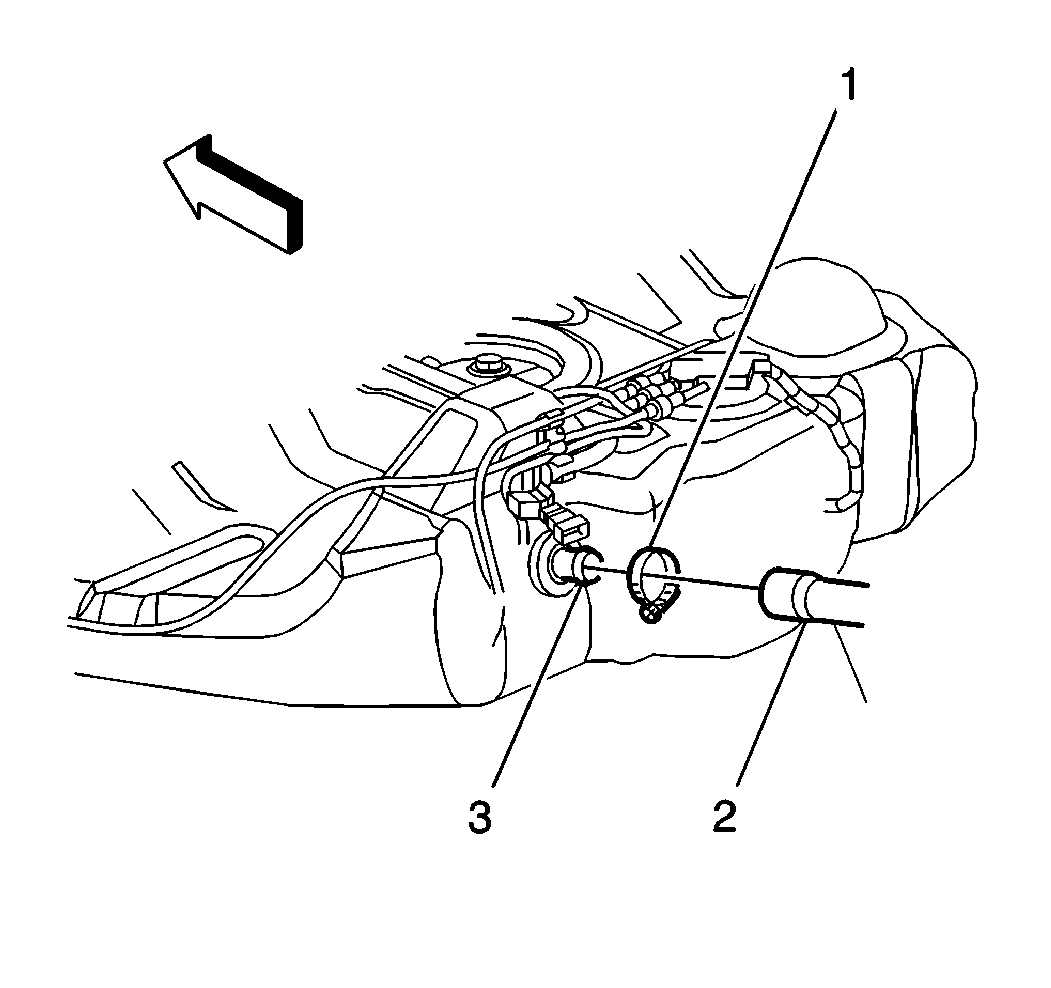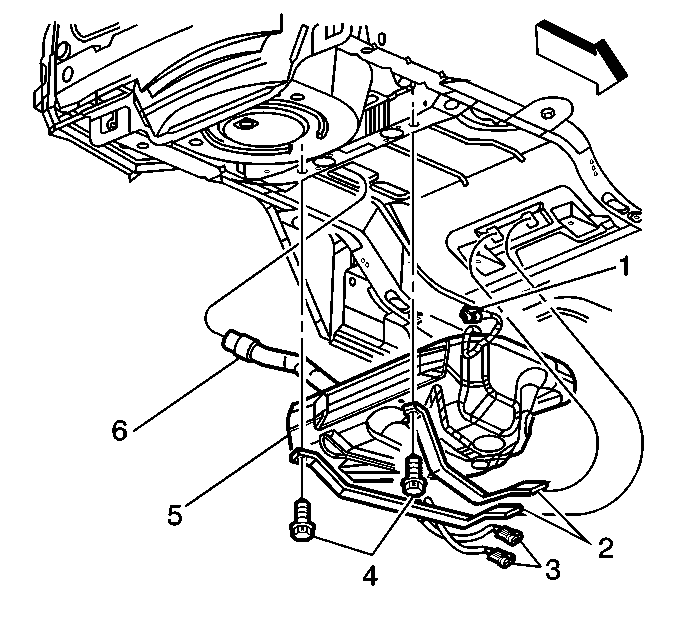Removal Procedure
Caution: Fuel Vapors can collect while servicing fuel system parts in enclosed
areas such as a trunk. To reduce the risk of fire and increased exposure to
vapors:
• Use forced air ventilation such as a fan set outside
of the trunk. • Plug or cap any fuel system openings in order to reduce fuel vapor
formation. • Clean up any spilled fuel immediately. • Avoid sparks and any source of ignition. • Use signs to alert others in the work area that fuel system work
is in process.
- Relieve the fuel system pressure. Refer to Fuel Pressure Relief .
- Drain the fuel tank. Refer to Fuel Tank Draining .
- Disconnect the fuel tank fuel feed pipe from the chassis fuel pipe near the fuel tank. Refer to Plastic Collar Quick Connect Fitting Service .
- Disconnect the fuel tank return pipe from the chassis fuel return pipe near the fuel tank. Refer to Plastic Collar Quick Connect Fitting Service .
- Disconnect the evaporative emission (EVAP) vapor near the rear of the fuel tank.
- Disconnect the fuel tank fill pipe (2) from the fuel tank (3).
- Disconnect the fuel tank in-line harness connector at the rear of the fuel tank.
- Remove the exhaust heat shield retainers and reposition the shield.
- With the aid of an assistant support and remove the fuel tank retaining straps.
- Remove the fuel tank and place in a suitable area.
- Remove the fuel sender assembly from the fuel tank. Refer to Fuel Sender Assembly Replacement


Installation Procedure
- Install the fuel sender assembly in the fuel tank. Refer to Fuel Sender Assembly Replacement
- With the aid of an assistant support, install the fuel tank retaining straps.
- Reposition the exhaust heat shield and install the retainers.
- Connect the fuel tank in-line harness connector at the rear of the fuel tank.
- Connect the fuel tank fill pipe (2) to the fuel tank (3).
- Connect the fuel tank return pipe to the chassis fuel return pipe near the fuel tank. Refer to Plastic Collar Quick Connect Fitting Service .
- Connect the fuel tank fuel feed pipe to the chassis fuel pipe near the fuel tank. Refer to Plastic Collar Quick Connect Fitting Service .
- Connect the EVAP vapor near the rear of the fuel tank.
- Lower the vehicle.
- Add fuel to the fuel tank.
- Install the fuel fill cap.
- Connect the negative battery cable. Refer to Battery Negative Cable Disconnection and Connection in Engine Electrical.
- Inspect for fuel leaks using the following procedure:

Notice: Use the correct fastener in the correct location. Replacement fasteners must be the correct part number for that application. Fasteners requiring replacement or fasteners requiring the use of thread locking compound or sealant are identified in the service procedure. Do not use paints, lubricants, or corrosion inhibitors on fasteners or fastener joint surfaces unless specified. These coatings affect fastener torque and joint clamping force and may damage the fastener. Use the correct tightening sequence and specifications when installing fasteners in order to avoid damage to parts and systems.
Tighten
Tighten the fuel tank retaining strap bolts to 46 N·m (34 lb ft).

Tighten
Tighten the fuel tank filler hose clamp to 2.5 N·m (22 lb in).

| • | Turn ON the ignition, with the engine OFF for 2 seconds. |
| • | Turn OFF the ignition, for 10 seconds. |
| • | Turn ON the ignition, with the engine OFF. |
| • | Inspect for fuel leaks. |
